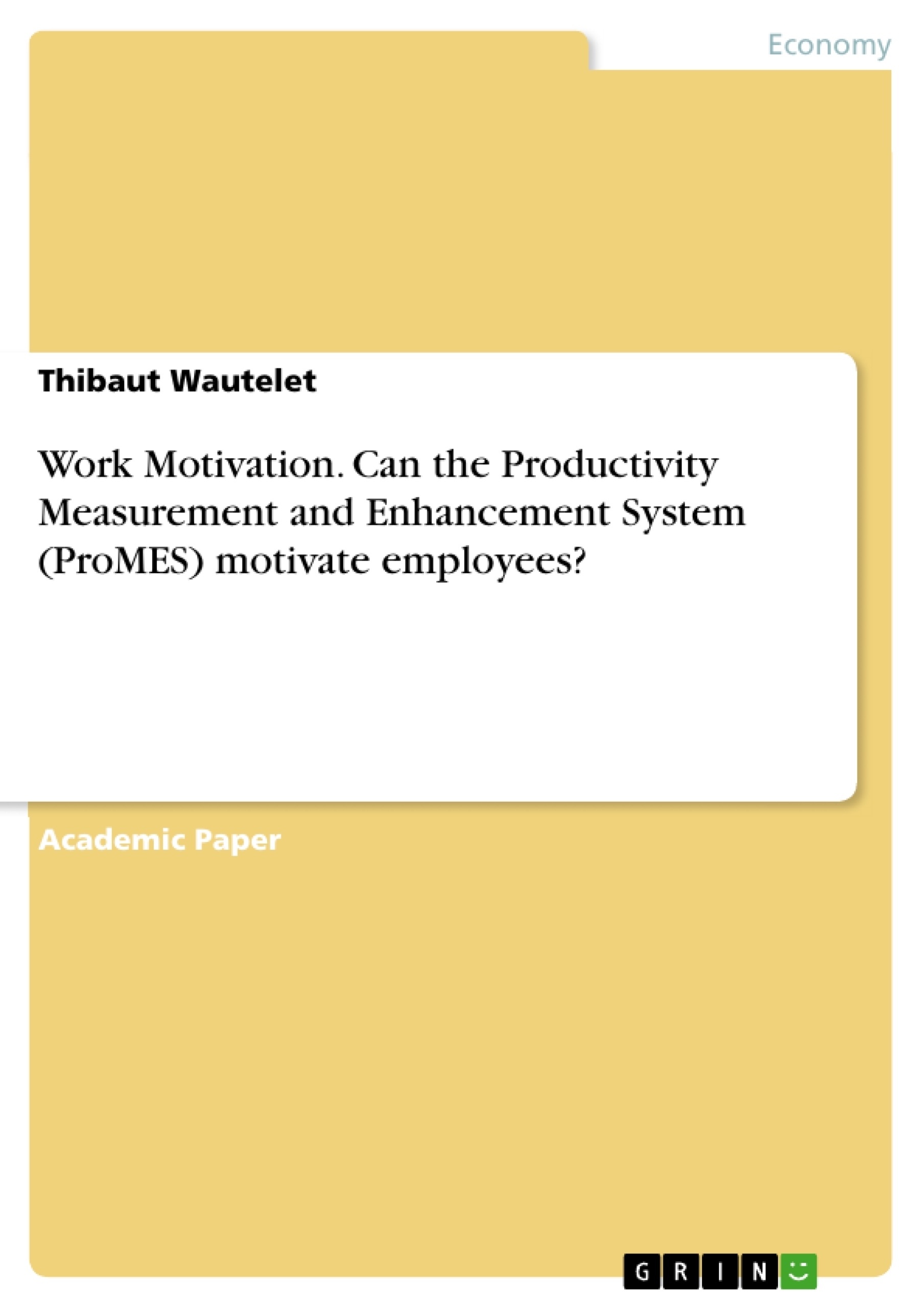How is employee motivation developed and how can it be used to drive productivity? The Productivity Measurement and Enhancement System (ProMES) from Pritchard shall give a response to this question, which is addressed in this assignment. The first part presents an overview of the development and the implementation of ProMES in an organization. The second part explores how ProMES intervention can motivate employees through the application of motivational theories. In conclusion, a critical appraisal is presented based on gained experience from implementation in business.
Inhaltsverzeichnis (Table of Contents)
- Introduction
- The Productivity Measurement and Enhancement System
- The idea of ProMES
- Development and implementation in an organization
- Motivational aspects in ProMES
- Pritchard's motivational approach
- Key elements of ProMES intervention
- Team work
- Participation
- Goal setting and feedback
- Can ProMES motivate employees? A critical appraisal.
Zielsetzung und Themenschwerpunkte (Objectives and Key Themes)
This assignment aims to analyze the Productivity Measurement and Enhancement System (ProMES) and its potential to motivate employees in organizations. The work explores the development and implementation of ProMES, drawing on Pritchard's motivational theory and its key elements.
- The concept and application of ProMES in organizations
- The role of performance measurement and feedback in driving employee motivation
- Pritchard's motivational theory and its relevance to ProMES intervention
- Key elements of ProMES intervention, including team work, participation, and goal setting
- The potential impact of ProMES on employee motivation and organizational productivity
Zusammenfassung der Kapitel (Chapter Summaries)
- Introduction: This chapter highlights the importance of employee motivation in today's economic environment and introduces the concept of ProMES as a potential solution to this challenge.
- The Productivity Measurement and Enhancement System (ProMES): This chapter explores the idea of ProMES, its development, and implementation in organizations. It outlines the key components of ProMES, including performance measurement and feedback systems.
- Motivational aspects in ProMES: This chapter examines the motivational aspects of ProMES through the lens of Pritchard's motivational theory. It identifies key elements of ProMES intervention that are designed to motivate employees, such as team work, participation, and goal setting and feedback.
Schlüsselwörter (Keywords)
This assignment focuses on the Productivity Measurement and Enhancement System (ProMES), employee motivation, performance measurement, feedback, team work, participation, goal setting, Pritchard's motivational theory, and organizational productivity.
- Citar trabajo
- Thibaut Wautelet (Autor), 2016, Work Motivation. Can the Productivity Measurement and Enhancement System (ProMES) motivate employees?, Múnich, GRIN Verlag, https://www.grin.com/document/374871



